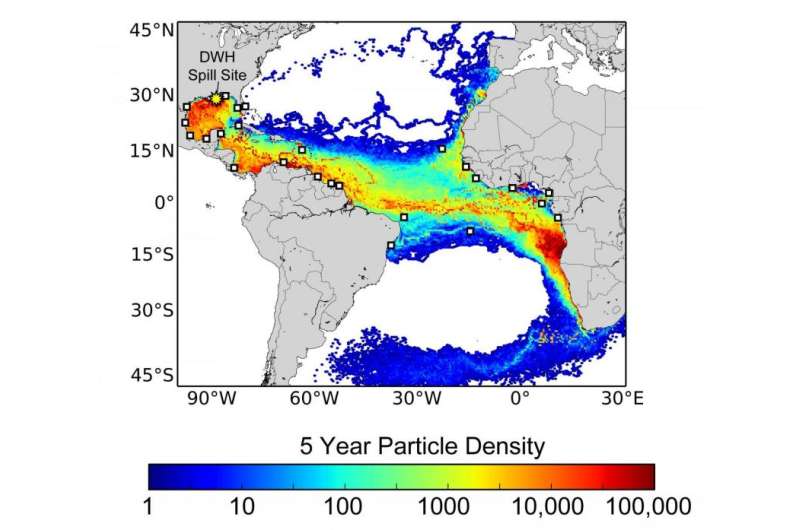Study assessed impacts of Deepwater Horizon oil spill on sea turtles

Researchers investigating the impacts of the Deepwater Horizon oil spill on sea turtles found that over 320,000 juvenile sea turtles from populations throughout the Atlantic Ocean were likely present in the northern Gulf of Mexico during the 87-day oil spill. The study, led by researchers at the University of Miami (UM) Rosenstiel School of Marine and Atmospheric Science, has important implications for international management and restoration efforts following oil spills.
"There is a perception that the spills impacts were largely contained to the northern Gulf of Mexico, because that is where the oil remained," said study's lead author Nathan Putman, a researcher at the Cooperative Institute for Marine and Atmospheric Studies located at the UM Rosenstiel School. "However, this overlooks the movement of migratory and dispersive marine animals into the area from distant locations."
Researchers used a computer model to backtrack virtual particles from the Gulf of Mexico spill site to determine the probability of young sea turtles arriving to this area from across the Atlantic. The abundance of turtles in the vicinity of the oil spill was derived by forward-tracking particles from 35 major nesting beaches using knowledge of their population sizes, oceanic-stage durations, and survival rates.
The simulations showed that upwards of 320,000 green (Chelonia mydas), loggerhead (Caretta caretta) and Kemp's ridley (Lepidochelys kempii) turtles were likely present within the spill site. More than 95 percent of sea turtles present at the spill site are thought to have originated from outside of the U.S., including from populations throughout the Gulf of Mexico, Caribbean, northern South America, and western Africa.
"Our findings give new geopolitical context to the scope of the spill, placing its impacts far beyond the present focus on the northern Gulf of Mexico," said Putman.
The leatherback, hawksbill, Kemp's ridley, and loggerhead sea turtles are all listed as endangered under the U.S. Endangered Species Act.
The model used in the study could also help researchers estimate populations of protected species present in others area of potential impacts, such as from fisheries, energy extraction operations, and military exercises.
The study, titled "Deepwater Horizon oil spill impacts to sea turtles could span the Atlantic," was published in the Dec 23 online editions of the journal Biology Letters.
More information: Deepwater Horizon Oil Spill Impacts to Sea Turtles Could Span the Atlantic, Biology Letters, rsbl.royalsocietypublishing.or … .1098/rsbl.2015.0596
Journal information: Biology Letters
Provided by University of Miami


















